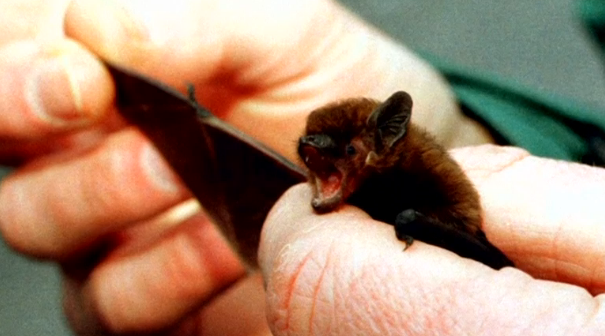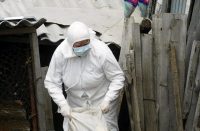
BERKSHIRE, ENGLAND, UK (Reuters) — Monitoring bat populations using thermal imaging is allowing conservationists to keep tabs on the threatened mammal. There are 18 resident species of bat in the United Kingdom, and some are on course to become endangered, according to the Bat Conservation Trust.
Numbers have declined due to loss of habitats like woodlands, changes in farming practices and disturbances from construction work.
“Bats have declined in numbers significantly over the last 50 to 70 years. Some populations we think are more stable than others,” said Simon Holmes, a founding member of the Berkshire & South Buckinghamshire Bat Group with 25 years experience working with bats. “But certainly, bats have declined significantly due to a number of threats; predominantly loss of habitat, farming practices, construction work, demolition of roosts, demolition of buildings, loss of woodland etc.”
Bats, which are the world’s only truly flying mammals, are a crucial part of the eco-system. Even a small bat such as the pipistrelle, measuring about 4cm long – can munch its way through about 3,000 insects a night; pests which could damage crops and even transmit disease.
British conservationists also see bats as an important indicators of biodiversity. They occupy a wide range of habitats, such as wetlands, woodlands, farmlands, and some urban areas.
According to the Bat Conservation Trust, “they are top predators of common nocturnal insects and are sensitive to changes in land use practices… making them excellent indicators for the wider health of the UK’s wildlife.”
It has been difficult to observe bats leaving and returning to their roosts and at hibernation sites. In the past, conservationists have had to rely on the naked eye and infrared cameras. But these are limited because when, for example, a bat flies behind tree foliage they can no longer be observed. The heat tracking capabilities of the thermal imaging camera gives scientists a new way of seeing bats, according to Holmes.
“The cameras are used in a wide variety of applications, but the most important one is actually trying to detect bats either leaving a roost or returning to a roost, or if they’re in an obscure area, say ivy in a tree,” said Holmes, during an evening of bat spotting in woods in Berkshire.
Holmes has been using a camera developed by FLIR Systems that means the heat emitted by the flying mammals can be detected without disturbing them.
“We have used infrared cameras and we still do use infrared cameras but they’re not as efficient or effective as the thermal camera. The thermal camera picks up heats signatures, the infrared doesn’t. And particularly in situations where bat are in ivy or difficult areas where the infrared camera wouldn’t see them, the thermal camera has the ability to pick up that heat signature which is an advantage over the infrared camera,” he added.
The Bat Conservation Trust hopes that being able to see bats’ activity in such detail will allow the public to engage with them.
Dr. Joe Nunez-Mino from the Trust said in a statement: “When you show people bats roosting and eating insects in the wild – through heat signature/thermal imaging technology – it really helps them understand why we should be conserving this endangered species, rather than fearing it.”







